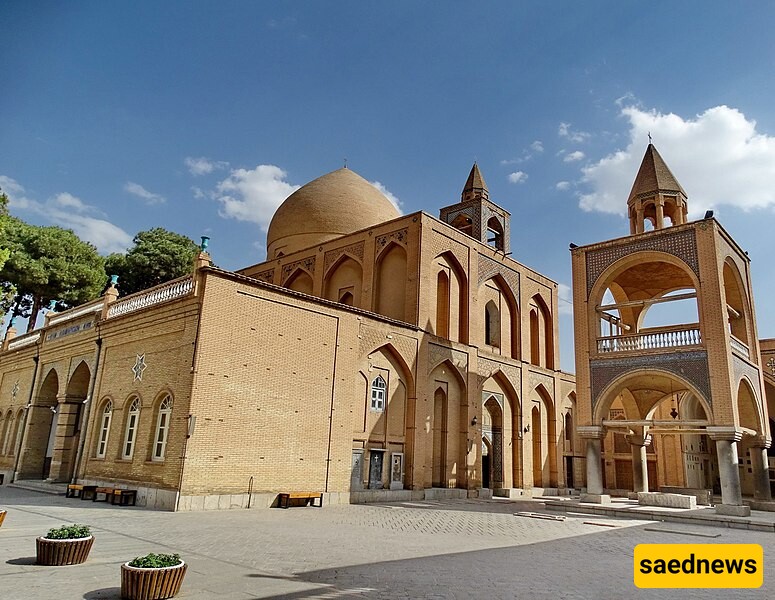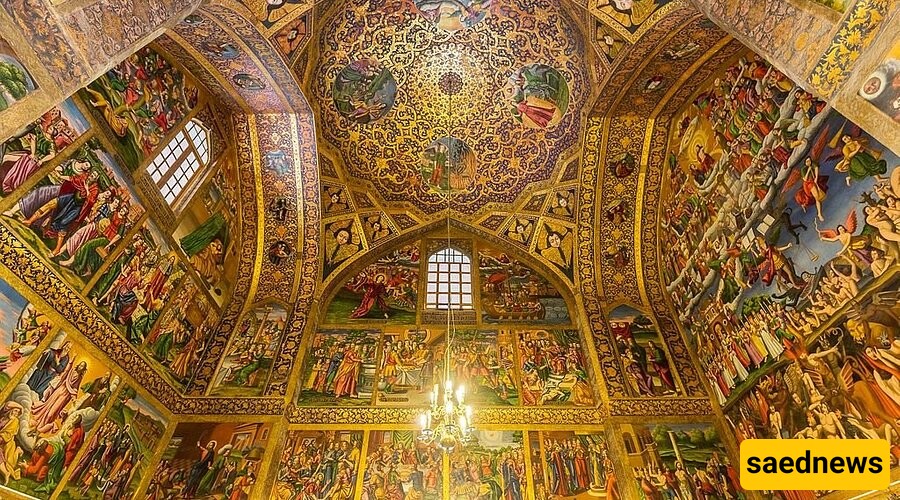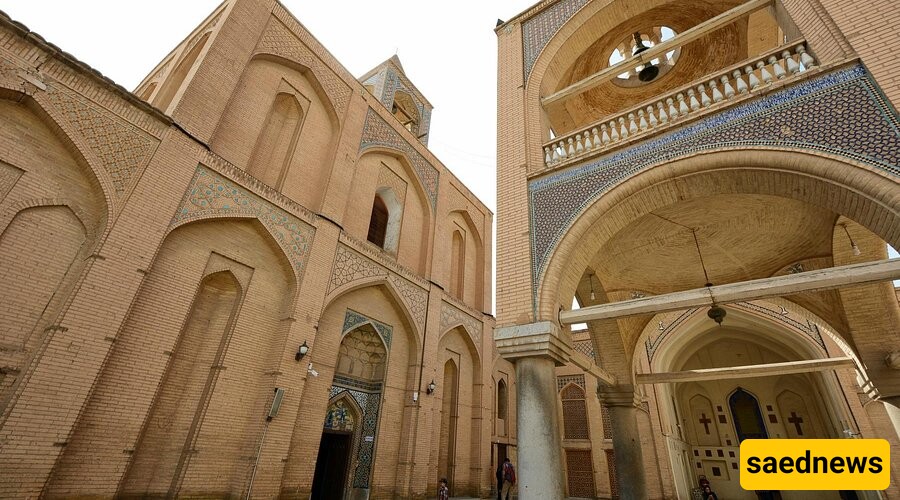SAEDNEWS: Vank Cathedral in Isfahan showcases the remarkable blend of Armenian and Persian artistry. This historic landmark reflects cultural coexistence and stands as a significant testament to both faith and creativity.

According to SAEDNEWS, Vank Cathedral, also known as the Holy Savior Cathedral, is one of Isfahan’s most iconic landmarks. Built in the 17th century during the Safavid era, it represents the cultural and artistic exchange between Armenian Christians and Persian Muslims. Its intricate design and historical significance make it a vital part of Iran’s architectural heritage.
Vank Cathedral was built by Armenian refugees who fled Ottoman persecution and were resettled in Isfahan’s New Julfa district by Shah Abbas I. The church became a spiritual and cultural center for the Armenian community in Iran after it was completed in 1664, which preserved their traditions and identity. The cathedral played a key role in Armenian cultural preservation. It housed one of the earliest printing presses in Iran and safeguarded important religious texts and manuscripts, which are still regarded as treasures of historical and cultural value.
The architecture of Vank Cathedral harmoniously combines Armenian and Persian influences. The interior is richly adorned with frescoes, gilded details, and intricate patterns that blend Christian and Islamic aesthetics while its exterior features simple brickwork. Inside the cathedral, colorful frescoes narrate Biblical stories, from the creation of Adam and Eve to scenes of the Last Judgment. These vibrant paintings are enriched with Persian-inspired techniques, which add depth and intricacy to their design. The cathedral’s dome integrates Armenian religious imagery with floral and geometric motifs as it was inspired by Persian mosque architecture, symbolizing the merging of two artistic and cultural traditions.


The frescoes serve as visual representations of Biblical narratives, which vividly portrays events from both the Old and New Testaments. The use of bright colors and fine details captures the viewer’s imagination and conveys religious themes effectively. Persian elements, such as floral designs and miniature-style artistry, are seamlessly blended into the Christian themes of the frescoes. This fusion highlights the interaction between Armenian and Persian cultures during the Safavid period.
Today, Vank Cathedral is a prominent tourist destination. Its unique architectural style, serene atmosphere, and rich history make it a key attraction in Isfahan’s cultural scene. The cathedral complex includes a museum that displays a variety of artifacts, manuscripts, and relics. It also chronicles the history and contributions of the Armenian community in Iran, preserving their legacy for future generations.
As an aging historical site, Vank Cathedral faces natural wear and environmental challenges. Restoration efforts focus on maintaining its structural integrity and protecting its intricate frescoes and manuscripts. The cathedral is not only a historic treasure but also a symbol of cultural harmony. Promoting its importance ensures that this landmark continues to inspire and educate visitors from around the world.
Vank Cathedral is situated in Isfahan’s New Julfa district, a highlight for visitors exploring the city’s cultural landmarks. For the best experience, visit during daylight hours when the sunlight enhances the vibrant frescoes. As it remains a sacred space, respectful attire and quiet behavior are appreciated.

Vank Cathedral is a powerful reminder of the harmony and coexistence between diverse cultures. Its unique blend of Armenian and Persian elements, combined with its profound historical and spiritual significance, makes it a must-visit destination in Isfahan. This extraordinary landmark invites all who visit to appreciate the beauty of shared heritage and enduring unity.

